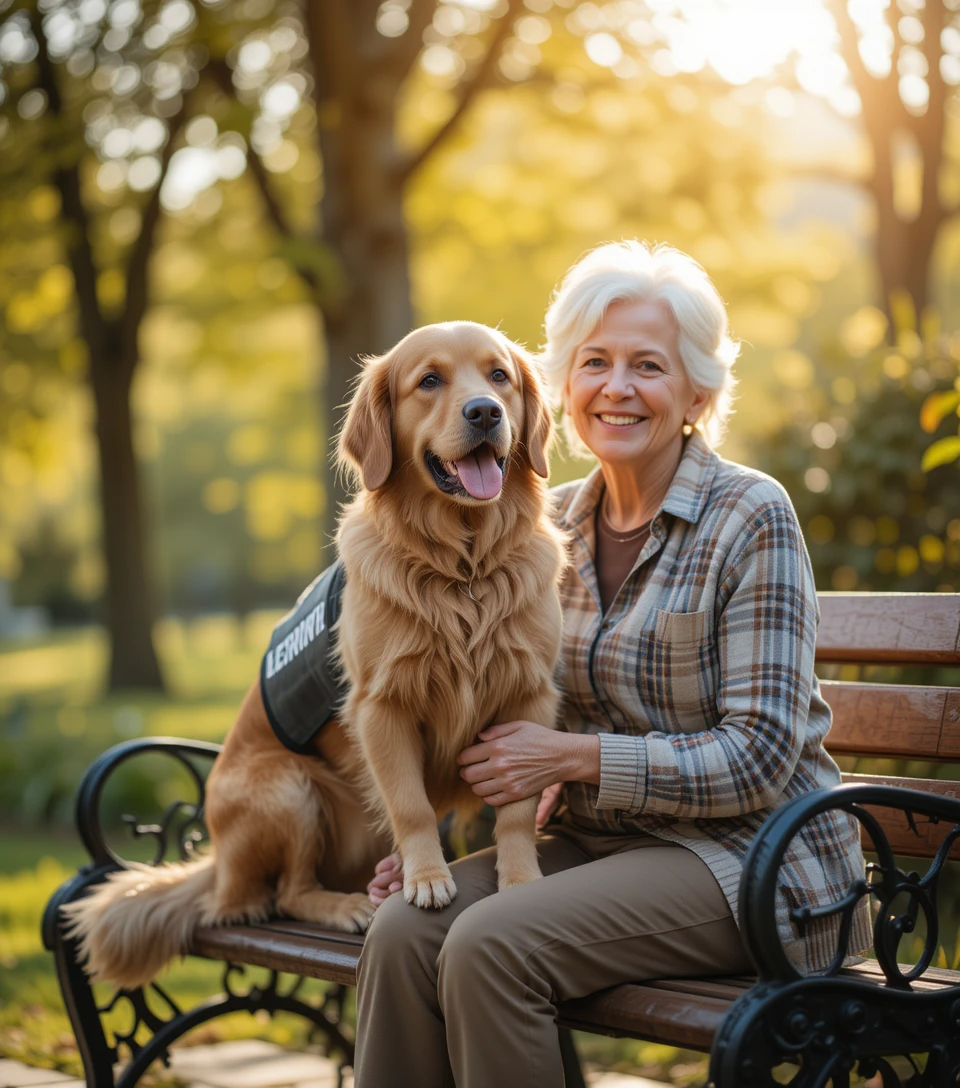Introduction
In a world where loneliness has become a silent epidemic, one of the most heartwarming solutions comes with four legs and a wagging tail. Dog therapy for socially isolated people is proving to be more than just comforting — it’s life-changing. These gentle, loyal companions don’t just offer emotional support; they help rebuild lost connections, boost mental health, and bring joy to those who need it most.
What Is Dog Therapy?
Dog therapy, also known as canine-assisted therapy, involves specially trained dogs interacting with people to offer comfort, reduce stress, and promote emotional well-being. These dogs visit hospitals, nursing homes, schools, and private homes, working under the guidance of trained handlers and healthcare professionals. Unlike service dogs, therapy dogs aren’t trained to perform specific tasks but are selected for their friendly, calm, and obedient nature.
How Dog Therapy Helps Socially Isolated People

For individuals who feel cut off from family, friends, or community, the presence of a therapy dog can break down emotional walls. Social isolation often leads to depression, anxiety, and cognitive decline. Engaging with a dog — even through simple acts like petting or walking — can stimulate social behavior, foster emotional openness, and ease feelings of alienation.
In many cases, therapy dogs act as a bridge between people and the world, encouraging conversation, touch, and human interaction.
Emotional & Psychological Benefits of Dog Therapy
Scientific studies and mental health professionals agree: interacting with dogs can have profound psychological benefits. These include:
- Lowered cortisol levels (stress hormone)
- Increased oxytocin (the “bonding hormone”)
- Reduced symptoms of depression and anxiety
- Enhanced self-esteem and motivation
- Improved social communication
For those who rarely interact with others, these benefits can spark a transformation — from isolation to connection.
Dog Therapy in Real Life: Where It’s Used
Therapy dogs are being used in a growing number of settings to support socially isolated individuals:
- Senior living communities: Enhancing mood and cognitive engagement
- Hospitals and hospices: Reducing fear, loneliness, and pain perception
- Rehabilitation centers: Encouraging patients to participate in therapy
- Veteran programs: Helping those with PTSD or trauma re-engage with others
- Correctional facilities: Promoting empathy and responsibility in inmates
Each interaction between a therapy dog and a person in need tells a story of comfort, trust, and healing.
The Science Behind the Bond: Why Dogs Help

Why are dogs so effective in breaking through isolation? The answer lies in biology and behavior.
Dogs are naturally empathetic, nonjudgmental, and highly attuned to human emotions. Their presence stimulates the release of dopamine and serotonin — neurotransmitters responsible for feelings of pleasure and happiness. Dogs also encourage routine and responsibility, which can help those who’ve lost purpose or structure in their lives.
Research from organizations like the National Institute of Mental Health (NIMH) supports the use of animal-assisted therapy as a complementary approach in treating mood disorders and social withdrawal.
Therapy Dogs vs. Emotional Support Dogs vs. Service Dogs
It’s important to understand the distinction:
| Type | Purpose | Access Rights |
|---|---|---|
| Therapy Dog | Comfort others in clinical or social settings | Limited public access |
| Emotional Support Dog | Supports one person’s mental health | Housing rights, no public access |
| Service Dog | Performs specific tasks for disabled handler | Full public access |
Therapy dogs are trained for public interaction, not individual support. They are not the same as service animals, and their access is generally limited to approved facilities.
How to Access a Dog Therapy Program
Getting involved in a dog therapy program is easier than many think:
- Find a certified organization like Pet Partners or Therapy Dogs International (TDI)
- Consult your healthcare provider about adding therapy to your care plan
- Attend therapy sessions through hospitals, senior centers, or community programs
- Participate in local visits or request home-based therapy if mobility is an issue
In some regions, mobile therapy dog teams offer house visits for the elderly or homebound.
Tips for Choosing a Certified Therapy Dog
Not all dogs are suitable for therapy work. Certified therapy dogs typically have:
- Calm, non-aggressive temperaments
- High sociability and confidence
- Strong obedience and reliability
- Certification from a recognized organization
- Updated health and vaccination records
Handlers also undergo training and background checks to ensure safe and respectful interactions.
Final Thoughts: The Power of Paws in Healing
Dog therapy offers more than comfort — it opens doors to healing, hope, and human connection. For socially isolated individuals, a therapy dog can be the spark that reignites life, restores purpose, and renews the spirit.
In the paws of these compassionate companions lies a powerful emotional bond — one that can turn isolation into interaction and loneliness into love.
❓ 10 FAQs about Dog Therapy for Socially Isolated People
- What is the purpose of dog therapy?
Dog therapy provides emotional comfort and social support through interactions with trained dogs, especially helpful for individuals experiencing loneliness or mental health issues. - Who benefits most from therapy dogs?
Seniors, veterans, hospital patients, and anyone experiencing social isolation or depression benefit greatly from therapy dogs. - Are therapy dogs the same as service dogs?
No. Therapy dogs comfort groups of people in settings like hospitals or senior homes, while service dogs assist individuals with disabilities. - How do I find a dog therapy program near me?
Check with organizations like Pet Partners, Therapy Dogs International, or local hospitals and senior centers. - Can therapy dogs help with depression?
Yes, therapy dogs have been shown to reduce symptoms of depression by promoting emotional well-being and social engagement. - Are therapy dogs allowed everywhere?
No, therapy dogs only have access to approved institutions and events. They don’t have the same legal rights as service dogs. - Can I train my own dog to be a therapy dog?
Yes, if your dog has a calm temperament and passes certification requirements from a recognized organization. - Do therapy dogs need special certification?
Yes. Reputable programs require dogs and handlers to pass evaluations and follow strict behavioral guidelines. - Is dog therapy covered by insurance?
It depends. Some mental health programs may include animal-assisted therapy, but it’s not widely covered under insurance. - What breeds make good therapy dogs?
Golden Retrievers, Labradors, Poodles, and Cavalier King Charles Spaniels are commonly chosen for their gentle and friendly nature.

